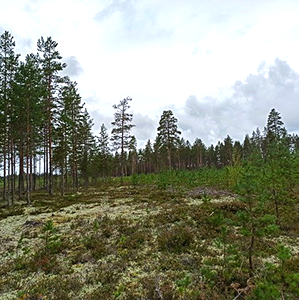Facts:
The project is expected to be completed: 2027
Financier: Formas, Knut & Alice Wallenberg Foundation

Conversion to alternative forestry practices are partly hampered by poor seedling establishment near retained trees – especially in northern regions. We study how belowground competition with tree roots and their associated mycorrhizal fungi can influence seedling establishment, with the aim of creating a scientific basis for development of alternative forestry methods.
Rotation forestry with clearcuts and even-aged stand management dominates Swedish forestry today, and mechanical site preparation is usually considered necessary to achieve sufficient forest regeneration. But why? What hampers seedling growth in the absence of these interventions? In order to identify where alternative forest management could be employed in Sweden, we require better understanding of the factors limiting seedling growth or survival near growing trees.
In the early 1900’s Swedish forestry was less homogeneous, and it was common to trust natural regeneration to establish the new forest stand. This, however, often led to unsatisfactory results – especially in nutrient poor northern forests. This is one important reason why rotation forestry with site preparation and planting has dominated since the 1950’s. Because these practices solved the regeneration problem, research on the topic slowed, and to this day we still have not fully answered how the observed regeneration benefits of site preparation come about. Such knowledge is crucial if we are to succeed in converting to alternative forestry methods.
Conversion to alternative forestry practices are partly hampered by poor seedling establishment near retained trees – especially in northern regions. This problem is strongest in a zone of 5-6 meters from forest edges and around single trees, where tree volume production can be as low as 10% compared to further out into a clearcut.
The current project establishes a series of large scale field experiments across Sweden where root exclusion treatments and isotopic techniques are used to study how belowground competition affects establishing tree seedlings. We measure seedling growth and nitrogen uptake at different distances from large trees, and with/without competition from tree roots and their mycorrhizal fungi. We also investigate where these challenges are most pronounced, and thus where in Sweden (along a north-south gradient), various clearcut-free forestry methods could be successful. The goal is to create a scientific basis for development of alternative forestry methods.
The project is expected to be completed: 2027
Financier: Formas, Knut & Alice Wallenberg Foundation